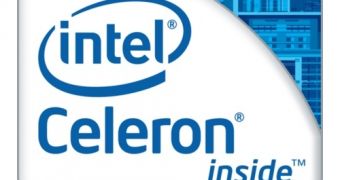Intel's Ivy Bridge architecture is the current standard that all high-end central processors have to compare themselves to, but that doesn't really help mainstream and casual consumers much, so Intel is working on expanding the architecture to the lower market segments.
The CPU range that Intel sells to owners of mid-range and entry-level desktop personal computers is called Celeron.
This series of central processing units will finally move to the 22nm Ivy Bridge architecture in three months (January 2013).
The Santa Clara, California-based company may even make the announcement during the Consumer Electronics Show (CES 2012).
This information comes from a report by Hardware.info, which mentions three chips by name: Celeron G1620, Celeron G1610 and Celeron G1610T.
All of them will be compatible with LGA 1155 motherboards based on the 6-series and 7-series chipsets.
The Celeron G1620 will be the strongest of the lot, which means it will be the closest to the $100 / 100 Euro price mark.
It has two cores working at 2.7 GHz, 2 MB of L3 cache, DDR3-1333 MHz RAM support, an integrated graphics processors (IGP) of 650 MHz, and a TDP (thermal design power) of 55W.
Celeron G1610 is supposed to be the affordable chip, which means it will be the “cheapest of the cheap” as it were. Though its specs, including the TDP, are mostly the same as above, it runs at 2.6 GHz.
That leaves us with the Celeron G1610T. This is a unit that should sell for a sum between the prices of other two. While it is quite a bit slower (2.30 GHz), it has a TDP of just 35W.
Those interested in either one of these chips should keep in mind that they have no Hyper-Threading support (the computer won't have twice the number of 'logical' cores to work with) and no Turbo Boost either (no automatic overclocking).
Nevertheless, they should be decent enough at everything, though an add-in graphics card will be needed for anything more strenuous than web browsing and video playback.

 14 DAY TRIAL //
14 DAY TRIAL //